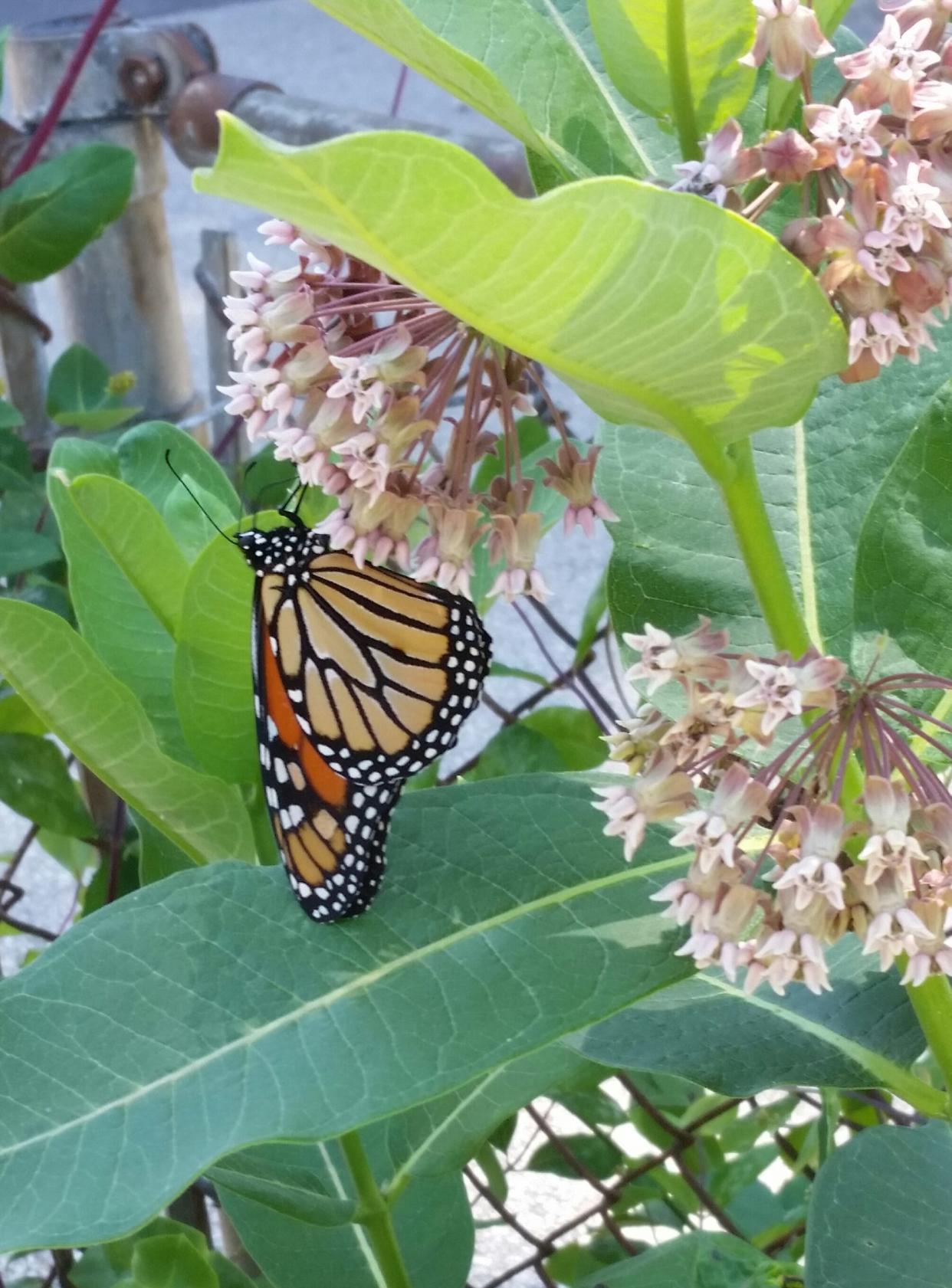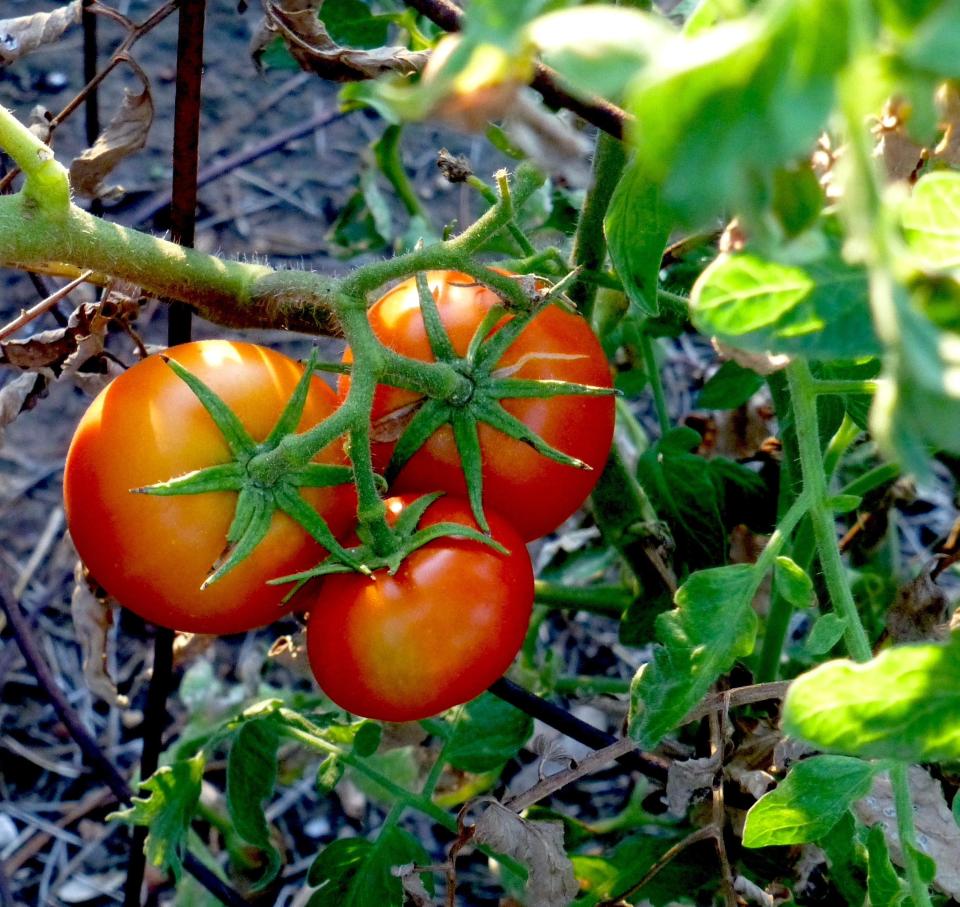Extreme temperatures and dry weather might have affected your tomatoes this year

Question: A neighbor gave me a bag of milkweed pods that contain seeds. I need to wait until spring to plant the seeds. How should I store them for winter, and do they need any special treatment when planting this spring?
A: Despite the fact common milkweed seems to spread readily from seed in nature, it can be a bit challenging to start from seeds you collect. Its aggressive nature has motivated many gardeners to opt for growing the less aggressive butterfly weed or swamp milkweeds that also support monarchs.
Whatever milkweed you grow, make sure the seeds are a rich brown, indicating they are mature and viable. Separate the seeds from the white fluff, the coma, before drying and storing. Do this by holding the seeds while in the pod and pulling off the fluff, rubbing the seeds between the palms of your hands or placing them in a paper bag and shaking vigorously. Allow the seeds to dry in a paper bag. Once dry, you can store them in an airtight container in the refrigerator.
Provide seeds with cold, moist stratification to break dormancy right before planting. Place seeds in a damp paper towel, sand or vermiculite. Set this inside a plastic bag or container in the refrigerator for at least 30 days.
You can start the seeds indoors or plant them directly in the garden after the last spring frost. Or let nature do the work with winter sowing. Convert a plastic milk jug into a vessel for starting these and other seeds outdoors. Partially separate the top and bottom of the milk jug leaving it connected at the handle. Remove the cap, add drainage holes, fill the bottom half with moist potting mix, and plant the seeds. Tape the opening closed with duct tape and place outdoors where it will receive winter sun and moisture from snow and rain. Watch for seedlings to appear in the spring.

Q: I live near Lake Michigan and Cedar Creek, so it tends to be cooler where I garden. I have been growing tomatoes for years and this is the first time I experienced this unusual ripening. Friends have reported the same thing. The fruit may turn red or yellow on top and white on bottom or all red, but the color does not go through the fruit. I also had an extraordinary amount of rot. Do you know what caused this and what, it anything, I can do to prevent it next year?
A: It was another challenging garden season. When temperatures drop below 60 — and we did have a few lows in the 50s — or soar above 90 degrees — remember those days? — it can impact ripening. The fruit may fail to ripen, ripen unevenly or develop yellow shoulders.
Compacted or overly wet soil can limit the root system and its ability to absorb needed nutrients. With a dry summer, it is often challenging to provide the right amount of water at the proper frequency to meet the plant’s needs. Adding organic matter to heavy clay soils increases drainage and boosts the water-holding ability of fast-draining soil. Spreading an organic mulch on the soil surface not only conserves moisture, it also suppresses weeds and improves the soil as it breaks down.
Nutrient deficiencies can also cause poor, uneven or blotchy ripening. Have your soil tested to see what, if any, nutrients need to be added. A soil test can be taken any time the ground is not frozen and has not recently been fertilized. The University of Wisconsin Soil and Forage Testing Lab (uwlab.soils.wisc.edu) has information on how to take and submit a sample. Rotate your plantings whenever possible. Follow tomatoes plantings with unrelated plants like onions, beans or beets. Avoid repeating plants in the same family in the same location for three years if possible.
Q: My Annabelle hydrangea used to be full and compact. Now the plant is tall and floppy. Please help.
A: Annabelle hydrangea flowers form on new growth, so prune these shrubs when dormant. Cut all stems back to 15 to 18 inches above the soil surface. Then prune half of the older and thicker stems to ground level. This will encourage new stems to sprout while the tall stems will help support the new growth and reduce flopping.
Q: My Skyline honey locust planted in 1973 produced seed pods for the first time this year. Is the weather to blame?
A: Honey locust trees species are considered polygamodioecious. They form perfect flowers containing male and female reproductive parts and male or female flowers on separate trees. Skyline is essentially a fruitless cultivar of honey locust selected to produce only male flowers. Male cultivars of honey locust can occasionally form perfect flowers allowing pollination to occur and fruit may form. Environmental stresses like extreme heat and drought may cause trees to form more fruit than normal and weather may have helped trigger the fruiting.
This article originally appeared on Milwaukee Journal Sentinel: Extreme temperatures, dry weather might have affected your tomatoes this year

